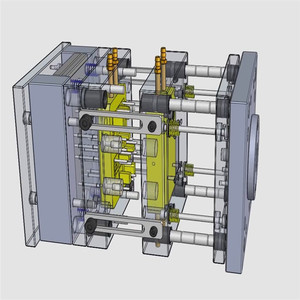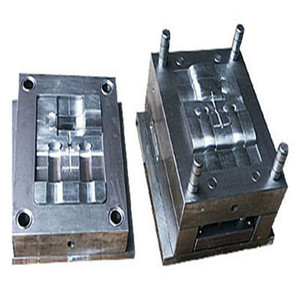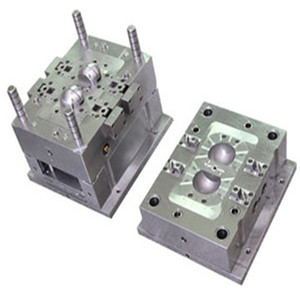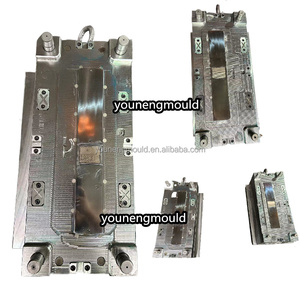
All categories
Featured selections
Trade Assurance
Buyer Central
Help Center
Get the app
Become a supplier

(763 products available)




















































During the creation of the item referred to as auto lamp molding plastic, its creators used a number of very important materials. Typically, these resources must be both safe and hard-wearing. Common materials used for automotive lighting include:
Polycarbonate (PC)
Polycarbonate is one of the most frequently used materials for auto lamp molding because of its durability and high impact resistance. PC is a transparent thermoplastic, which means it can be molded easily into complex shapes while maintaining its clarity. This property makes it ideal for headlight lenses and other transparent automotive parts. Additionally, polycarbonate can withstand extreme temperatures and is resistant to UV light, which ensures that it will not darken or degrade over time when exposed to sunlight.
Acrylonitrile Butadiene Styrene (ABS)
ABS is widely used because it is easy to mold and paint. Acrylonitrile Butadiene Styrene (ABS) is a favored material in automotive lamp housings and reflectors. Its rigidity and resistance to chemical exposure make it suitable for parts that need to maintain structural integrity over time. ABS can also be easily painted, allowing for parts that match the vehicle’s aesthetic design. Often, the combination of ABS with polycarbonate, known as ABS-PC blend, is employed to harness properties from both plastics.
Poly(methyl methacrylate)
Known as PMMA or acrylic, poly(methyl methacrylate) is a transparent thermoplastic that is frequently used as an alternative to glass in vehicle tail lights and turn signals. PMMA provides exceptional clarity and weather resistance, making it suitable for applications where light transmission is critical. This plastic also offers good scratch resistance, though it is less impact-resistant compared to polycarbonate. Despite the need for a protective coating to enhance its durability, PMMA remains a popular choice for its aesthetic qualities.
Thermoplastic Elastomers (TPE)
These materials combine rubber-like flexibility with plastic properties, making them ideal for gaskets, seals, and light covers. TPEs have excellent rebound properties and can withstand a wide range of temperatures, which makes them suitable for lighting components that may experience varying heat levels.
Polyethylene Terephthalate Glycol-Modified
Polyethylene terephthalate glycol-modified (PETG) is a copolymer of polyethylene terephthalate (PET) modified by the addition of glycol. This helps in reducing the polymer's high tendency to form covalent bonds with itself, resulting in a highly moisture-resistant and easily recyclable material. Because of its inherent toughness and chemical resistance, PETG is commonly used for protective coatings and housings in automotive lighting.
Auto lamp molding plastics are used in various ways to derive the maximum benefits from them. Some of the notable uses include:
Headlight Lenses
People use auto lamp molding plastics mostly for making headlight lenses. Polycarbonate, due to its impact resistance and clarity, is a preferred material for durable and lightweight headlight lenses. They also ensure safety because they are not prone to breaking like glass. They also improve visibility at night and during bad weather. This is done because of their ability to transmit a high amount of light.
Tail Lights
For taillights, molded plastic for lamps comes in handy in red and amber color transmission. Also, acrylic (PMMA) provides good weather resistance and maintains color over time. Injection-molded plastics allow for complex designs that enhance the visibility of signals to other drivers.
Turn Signal Lights
Auto lamp molding plastics used in the manufacture of turn signal lights are usually molded from styrene-based plastics such as acrylic and ABS. The plastics provide the reflectivity and transparency needed for effective signaling. These materials help in ensuring that lights are visible, improving safety through clear communication with other road users.
Interior Lighting
Auto lamp molding plastics help make interior lighting components like map lights and ambient lighting. For these applications, the plastics provide aesthetic flexibility and enable intricate designs. The molded plastics come in different color choices and are transparent or diffusive. This helps ensure the light is uniformly distributed and thus enhances the car’s ambiance and usability.
Light Guides
Light guides made from molded plastics are often used for LED lighting features, especially in modern vehicles for ambient lighting. These materials help in redistributing the light from an LED source evenly across the surface of the light guide. This creates a visual appeal that is actually attractive. They also provide design flexibility, allowing for innovative shapes and configurations that enhance the vehicle’s interior and exterior aesthetic appeal.
Reflectors
Plastics used in auto lamp molding are critical for producing reflectors in lighting assemblies. Materials like ABS and polycarbonate are molded into reflector shapes that enhance light output by directing light where needed. The reflectors improve headlight efficiency, thus enhancing nighttime visibility.
Buyers of auto lamp molding plastic enjoy a wide range of customization options. Below are some of the available adjustments:
Material Selection
Various materials are available for customization, each with unique properties. Automotive polycarbonate displays high impact resistance, heat tolerance, and flexibility. ABS plastic retains form and is easy to paint or finish. PMMA exhibits clear appearance and weather and scratch resistance. There is often a choice to suit functional and aesthetic requirements.
Design and Sizing
Custom lamp molds are designed in preferred shapes and dimensions using CAD software. Molded plastics can also be made to fit specific vehicle designs or accommodate new features. Auto lamp molding also employs advanced technologies like 3D printing to quickly prototype designs for testing.
Surface Finish
Various textures and finishes are available for auto lamp molding plastics. These include glossy, matte, and textured surfaces that can enhance the look and feel of the automotive lights. Custom graphics, embossing, or holographic effects are used to create unique designs that enhance the vehicle's aesthetic appeal.
Color Customization
Auto lamp molding is done using plastics that have great color flexibility. This is done using techniques like dyeing and acetone polishing. These plastics make it possible for the buyers to have their preferred colors for their lamp components. They achieve this by mixing pigments into the plastic or applying paint and vinyl stickers to the surface of the plastics. These colors help improve the branding or match the vehicle's exterior and interior color schemes.
Coatings and Finishing Options
Auto lamp molding plastics have a variety of coatings and finishing options available. Buyers add coatings like UV-resistant layers to protect the plastic from sun damage. Other coatings like textured finishes improve grip or gloss varnish for an attractive smooth finish are also available. These options enhance the durability, visual appeal, and functional benefits of automotive lamps.
Branding and Logos
To add a business touch and customize auto lamp molding plastics, a buyer can add branded logos to the products. They can emboss or print their company logos or name on the plastics to enhance their visibility and presence in the market. This further helps in developing brand identity and recognition within their market.
Material Type
The most important thing when choosing auto lamp molding plastics is the type of material used. Buyers looking for durability and impact resistance should go for polycarbonate. Those who prefer ease of processing and painting usually settle for ABS. Go for acrylic if you want excellent clarity and weather resistance. Thermoplastic elastomers are also suitable for flexible parts.
Precision
Buyers should ensure that the molding process used to make the plastics produces components with high precision. Such plastics have uniform thickness and exact dimensions. This, in turn, ensures that the parts fit perfectly in the vehicles. When molding the plastics, use advanced techniques like injection molding to achieve high precision.
Light Transmission
To ensure safety and functionality, buyers should consider the light transmission properties of the plastics they want. Go for plastics that provide high transparency and clarity. This ensures that more light passes through the automotive lamps. Polycarbonate and acrylic usually have great light transmission. Therefore, ideal for applications like headlight lenses and taillights.
Heat Resistance
Consider the heat resistance of the plastics, especially when it is intended for components close to light sources. Go for plastics with great heat resistance to prevent warping, discoloration, or loss of structural integrity. Materials like polycarbonate and PETG offer good heat resistance and are useful in maintaining the stability of the mold over time.
Weatherability
It is important for the plastics to be able to withstand environmental elements like UV rays, moisture, and temperature variations. Such resistances ensure the longevity of the auto lamps. Therefore, buyers should look for materials like acrylic and UV-stabilized polycarbonate. They are useful in providing weatherability.
Aesthetic Appeal
Buyers should consider the aesthetic properties of the plastic materials. Such items have a huge impact on the overall look of the vehicle. They should prioritize materials that come in a variety of colors and finishes. It also allows for branding, logos, and custom textures. This will enable the buyers to make the components visually appealing.
Sustainable Options
In the current world, sustainability is always on people's minds. Therefore, buyers should consider eco-friendly materials if they are to be environmentally conscious. Options like bio-based thermoplastics or recyclable materials can align with green initiatives. This helps to reduce the environmental impact of automotive lighting products.
It is a type of thermoplastic material used in the automotive industry. It is used for creating components of vehicle lighting systems. They are durable, lightweight, and impact-resistant. Normally, they are used in making headlamp lenses, taillights, and turn signal indicators.
Auto lamp molding plastics come with a variety of benefits. To begin with, they are durable and impact-resistant, making them ideal for protecting lights from everyday road hazards. They are also lightweight, which helps improve fuel efficiency in vehicles. The plastics also have great design flexibility. This allows manufacturers to create complex shapes and achieve different aesthetic appeals. Lastly, they offer excellent weather and UV resistance to ensure long-term clarity and performance.
Auto lamp molding plastics are made using different types of materials. The most common ones include polycarbonate, acrylic (PMMA), ABS, and thermoplastic elastomers (TPE). They each have distinct advantages. For example, polycarbonate offers high impact resistance, while acrylic provides excellent clarity.
When choosing Auto lamp molding plastic, one should consider several factors. For instance, material type, precision, and light transmission should be taken into account. Additionally, weatherability, aesthetic appeal, and sustainability should be prioritized. After considering these, one will end up with the right auto lamp molding plastic for the intended purpose.
Yes, there are sustainable options for Auto lamp molding plastics. Buyers nowadays go for bio-based thermoplastics and recyclable materials. These align with environmental initiatives to reduce waste and carbon emissions. Moreover, eco-friendly practices in manufacturing help to minimize the overall environmental impact. This makes Auto lamp molding plastics. They support green initiatives while still providing quality and durability.